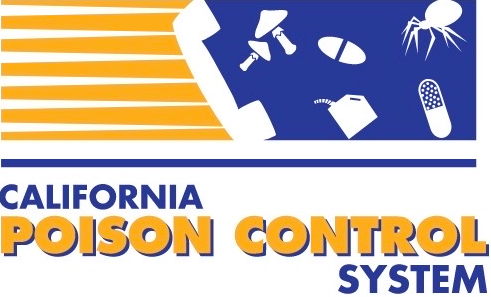by Christie Sun and Binh Ly, MD
Introduction
Botulism is a potentially fatal neurological disease, resulting from botulinum neurotoxin produced by Clostridium botulinum and other Clostridium species. Outbreaks have been reported worldwide and while the fatality rate has improved, serious morbidity and mortality may still occur. The majority of adult cases are food borne, but there are also other forms related to inhalational exposure, wound inoculation, iatrogenic injections, and gastrointestinal (GI) colonization typically affecting infants.
Case presentation
A 38-year-old male presents to the Emergency Department with nausea, vomiting and abdominal pain in the setting of blurred vision and difficulty swallowing over the last 12 hours. He has no medical problems and was feeling well earlier today while at a potluck. Vital signs on arrival to the Emergency Department are as follows: temperature 98.7 degrees Fahrenheit, heart rate 61, blood pressure 105/63, respiratory rate 18, oxygen saturation 95% on room air. His exam reveals an alert male who and oriented. His neurological exam is notable for dilated pupils which are sluggishly reactive to light. There is mild ptosis on exam and sensation is normal, however deep tendon reflexes are mildly diminished. He is also noted to have dry mucous membranes, absent bowel sounds and dry, warm skin. Arterial blood gas demonstrated: pH 7.30, pCO2 50, P02 100.
Questions
- How does botulinum toxin cause toxicity?
- Do patients with botulinum toxicity present with altered mental status?
- What tests can be used to diagnose botulism?
- How can botulism be treated?
- What are some measures that can be taken to prevent botulism?
Epidemiology
Botulism was first identified in Germany in the early 1700s after an association with contaminated sausage and the term was coined from Medieval Latin botulus for sausage. In modern times, home-processed foods account for the majority of outbreaks compared to commercially processed food. Of the almost 200 confirmed cases in 2015, the Centers for Disease Control (CDC) notes that infant botulism accounted for 71%. Most cases in adults were due to contaminated food though a small number of cases were due to wound botulism. Toxin type A was the most common causative agent in wound and food borne botulism while type B was the most common in infant botulism.
Data regarding antitoxin release and laboratory confirmation of botulism is recorded and published by the CDC annually. Because the only sources of antitoxin are the CDC, the California Department of Public Health and the Alaska Division of Public Health, nearly all cases are reported.
Pathophysiology
The anaerobic bacteria, Clostridium botulinum, produces all seven serotypes of the botulinum neurotoxin (A through G). There are other Clostridium species that produce some of the toxin types as well. The bacteria are found everywhere and its spores are highly resistant to destruction but they are heat labile. Anaerobic conditions at warm temperatures will result in toxin formation by the bacteria. The toxin is potent with lethal doses reported in microgram amounts.
The toxin is single chain polypeptide that is cleaved into a dichain structure, consisting of heavy and light chains. The heavy chain irreversibly binds to acetylcholine (ACh) containing neurons which takes up the dichain by endocytosis. While the light chain interferes with the protein apparatus that allows for exocytosis of ACh, thereby impairing neuromuscular transmission. These effects occur in the peripheral nervous system, but is not thought to impact the central nervous system.
Food borne
Food borne botulism usually occurs after ingestion of contaminated food with preformed toxin. The onset of symptoms usually occurs within a day, however can vary depending on the toxin serotype. Toxin serotype may also affect the taste and look of food, though it can taste and appear normal. Prevention of food-borne botulism is generally based on hygienic food practices and proper heating and sterilization. The toxin is generally destroyed by heating or boiling food for a sufficient amount of time, however the spores are heat resistant and require very high temperature treatments before they are safe to consume. Proper refrigeration combined with salt content and/or acidic conditions may prevent germination of spores and toxin production. High pressure canners may also reduce the risk of botulism.
Infant or adult intestinal colonization
Infant botulism results from gastrointestinal (GI) proliferation of toxin after ingestion of Clostridium organisms. Although there are many potential sources of infant botulism, it is classically associated with ingestion of spore-infested honey and hypothesized to be secondary to decreased gastric acidity in this age group. However, it can also occur in adults with surgically altered gastrointestinal tracts such as gastric bypass surgery, prolonged antibiotics, or proton pump inhibitors. Symptoms may take weeks to months to manifest. Avoidance of honey in infants younger than 1 year of age is commonly advised to reduce the risk of botulism in this population.
Wound
Wound botulism occurs when spores contaminate a wound. In the anaerobic environment of the wound, toxin is then produced and can be absorbed systemically. It is most commonly associated with intravenous drug users, though it has been reported in traumatic wounds. The incubation period is usually less than two weeks, but may be longer.
Iatrogenic
Iatrogenic botulism has become a more recent concern with the introduction of cosmetic injection of botulinum toxin A. It is also used to treat cervical dystonia, blepharospasm, strabismus, spasticity, chronic migraine, detrusor overactivity and hyperhidrosis. The injected toxin affects local ACh release and can produce local effects in adjacent tissues, however systemic manifestations have been described in rare cases.
Clinical manifestations
The predominant features of botulism are generally neurological, though gastrointestinal (nausea, vomiting, abdominal pain, constipation) symptoms in food borne botulism may occur also. Commonly described findings are cranial nerve palsies, including diplopia, ptosis, sluggishly reactive pupils, dysarthria, dysphagia, and dysphonia, as well as progressive descending paralysis. The most concerning manifestation would be respiratory failure from muscle weakness. Infants generally present with more insidious symptoms such as poor feeding, poor sucking, and “floppy” tone. Fever is generally not associated with botulism except in few cases of wound botulism.
Diagnostics
Clinical suspicion in the setting of a descending cranial nerve deficits and a potential exposure is the basis for exposure. While stool, serum, or gastric aspirate can be collected for use in mouse bioassays, the analysis often takes too long to be helpful in the initial treatment but they should be performed for further public health investigation. Other testing include serum electrolytes, electromyography, edrophonium test, and lumbar puncture are often used to exclude other diagnostic considerations. Other conditions that may present similarly to botulinum toxicity include Guillain-Barré syndrome (particularly the Miller Fisher variant of Guillan-Barre), myasthenia gravis, tick paralysis, Lambert-Eaton syndrome, inflammatory myelopathies, and paralytic shellfish poisoning.
Treatment
The management of patients suspected of having botulism consists of both supportive measures and antitoxin administration. Management is also complicated by the absence of a timely diagnostic biological marker to confirm the diagnosis and the time sensitive nature of treatment implementation to prevent further progression of illness.
In general, patients should be admitted to an appropriate area of the hospital for continuous monitoring of respiratory and neurological function. There is a risk of progressive muscle weakness and subsequent respiratory failure. Objective measures such as negative inspiratory force, pulse oximetry, and end-tidal capnography are often used to determine need for intubation and ventilator support.
Activated charcoal is generally administered to patients, if no contraindications exist. In vitro studies show that it absorbs serotype toxin A and it is suggested even after a substantial time delay as the bacteria and spores may still be present in the gastrointestinal tract.
Additionally, wound care in the setting of wound botulism is strongly recommended. Antibiotics have been found to be effective against C. botulinum and penicillin is commonly useful, however antibiotics do not play a role in treatment of preformed toxin, nor does it impact germination of spores in the gastrointestinal tract.
The other mainstay of treatment is botulinum antitoxin. There are two types of antitoxin - one that is specific to infant botulism and another which is used for the other types of botulism. Obtaining heptavalent botulinum antitoxin (HBAT) for non-infant cases requires contact with the local or regional health department or CDC Emergency Operations Center at 770-488-7100. Acquiring botulism immune globulin (BabyBIG) for cases of suspected infant botulism will require contact with the Infant Botulism Treatment and Prevention Program at 510-231-7600. Both antitoxins bind only free toxin, thus paralysis that has already occurred will not reverse. Early administration in cases where suspicion is high is imperative for this reason.
HBAT is an investigational drug that has since replaced the previously available antitoxin forms. It is an equine derived antibody that is effective for all known toxin types. It has been demonstrated to reduce fatality rate and abbreviate course of illness in some studies. Samples from serum, stool and gastric aspirate should be obtained prior to administration for confirmatory testing. For individuals with known allergy to horse derived products, typical precautions and treatments for anaphylaxis or hypersensitivity should be used. The risk of hypersensitivity reactions are expected to be lower than other equine derived antitoxins because it is a despeciated product. Because botulism is a rare condition and the supply of HBAT is limited, clinicians should be aware that HBAT is dispense following authorization from a designated public health agency. Antitoxin is typically stored at a several major airports nationally allowing it to be rapidly shipped to the nearest airport servicing the medical center caring for the affected patient. Once HBAT arrives in the local community it is the responsibility of the hospital pharmacy to retrieve it from the airport.
BabyBIG is used to treat infant botulism. It is human derived and specific for toxin types A and B. It is approved for infants less than 1 year of age and has been shown to significantly decrease the length of stay in the hospital and intensive care unit as well as duration of mechanical ventilation and parental nutrition.
Discussion of case questions
- The toxin binds irreversibly to presynaptic ACh containing neurons, inhibiting neurotransmitter release and resulting with paralysis.
- Botulism toxin is not thought to cross into the central nervous system. Thus patients typically presents with preserved mental status, unless there is associated hypoxia secondary to respiratory failure.
- While there are laboratories that can test for the various toxin serotypes, the testing can take time and delay life-saving treatment so it is generally not advised to wait for results prior to treatment. Other tests that may be helpful to exclude differential diagnoses include electrolytes, electromyography, edrophonium testing, and lumbar puncture.
- Antitoxin is available through the CDC or the California Department of Public Health. Otherwise supportive measures, particularly airway monitoring and management, are the mainstays of treatment.
- Proper handling and preparation of food is the mainstay of prevention. Food should be cooked thoroughly and kept at safe temperatures for storage. Avoid situations where botulism is most commonly identified such as picnics where adherence to proper food storage guidelines may not be perfected, home canned foods without proper processing, or feeding of honey to infants.
Case conclusion
Shortly after his arrival to the emergency department, the local health department was contacted HBAT. He had a somewhat prolonged hospital course involving admission to the intensive care unit for close respiratory monitoring. While he did not require mechanical ventilation, his neurological symptoms persisted, gradually abating after 1 week. He was ultimately discharged 2 weeks after presentation with marked improvement in symptoms, however continued to complain of generalized fatigue.



